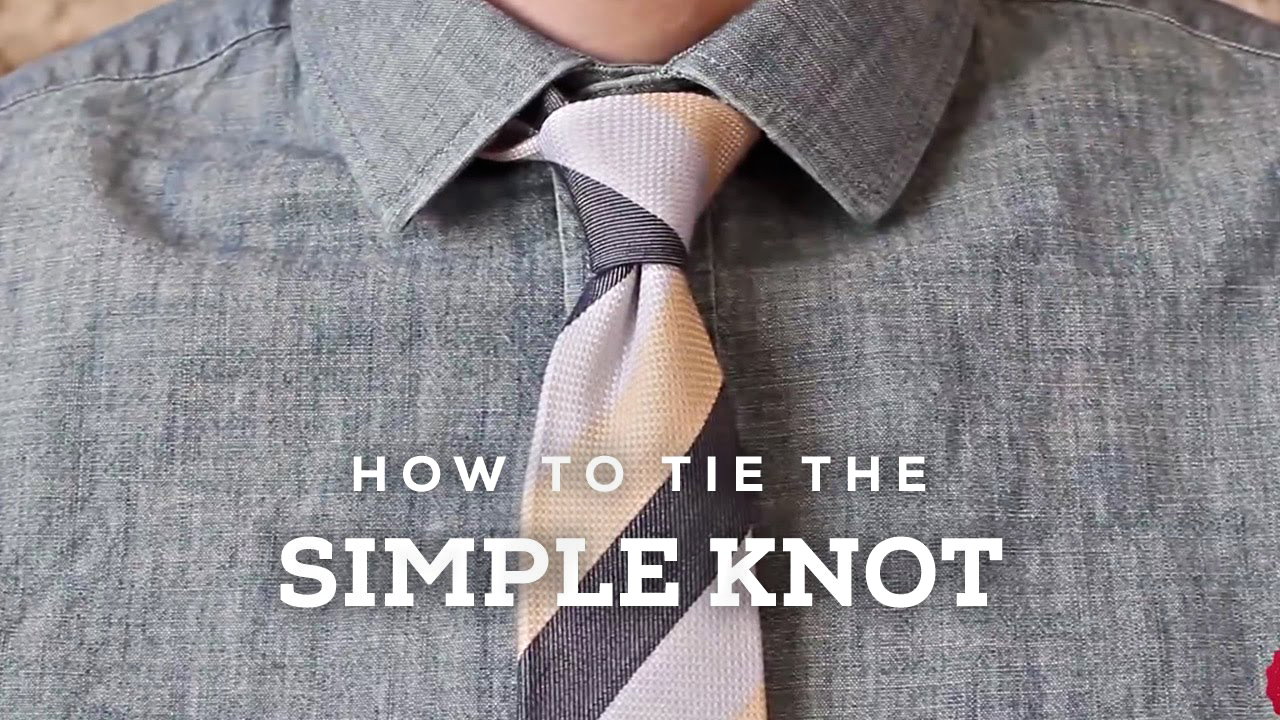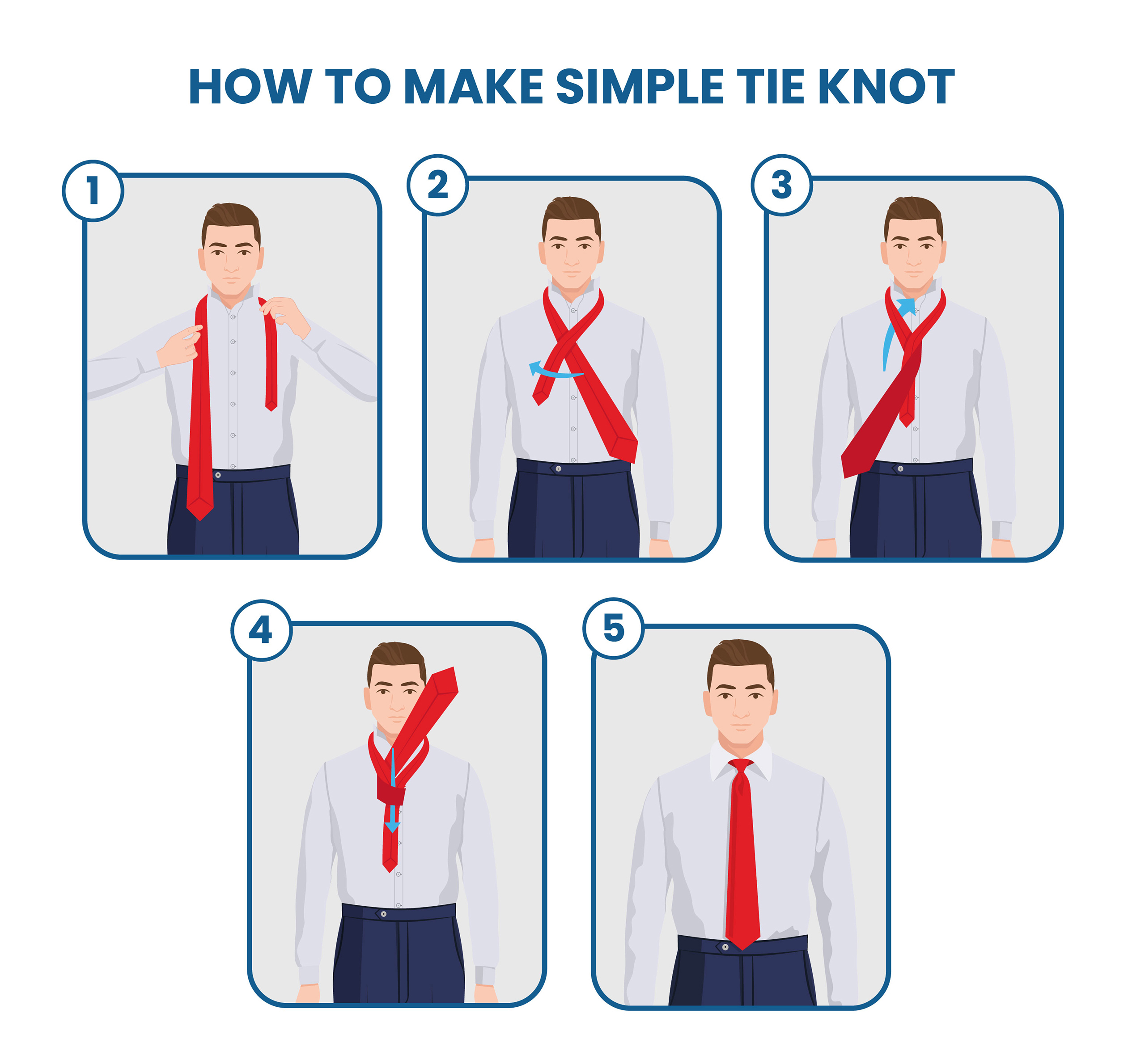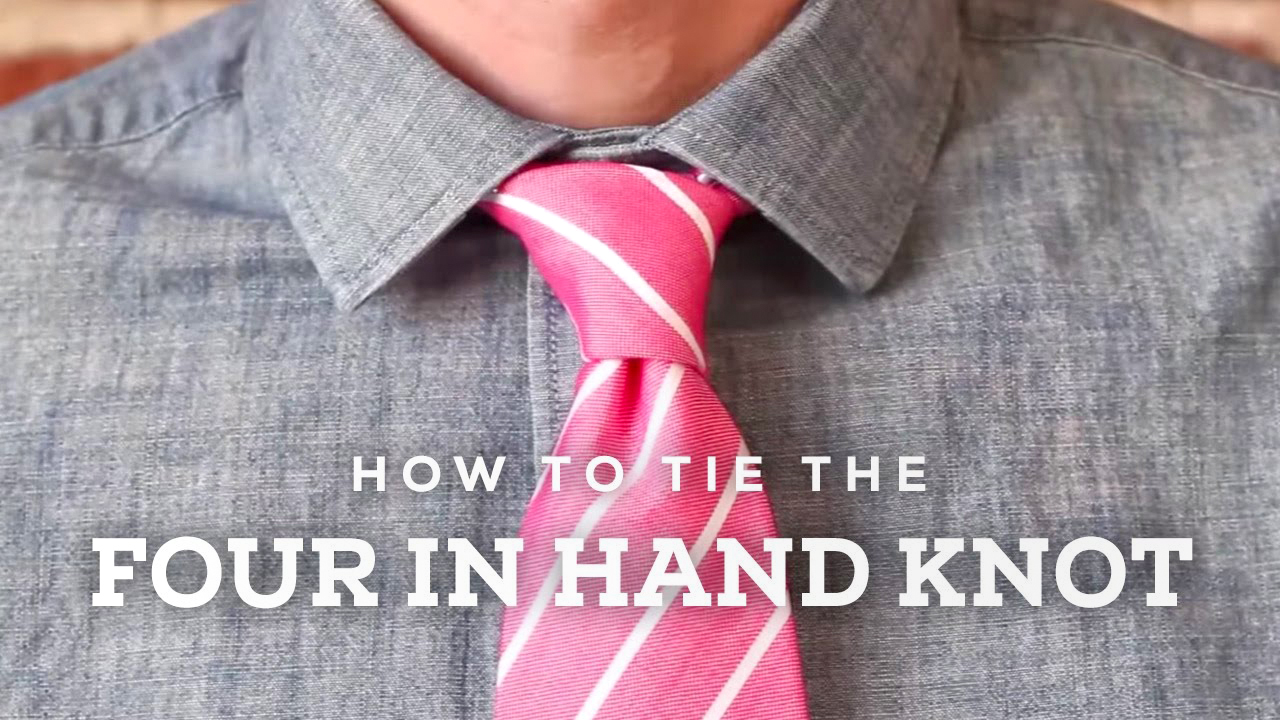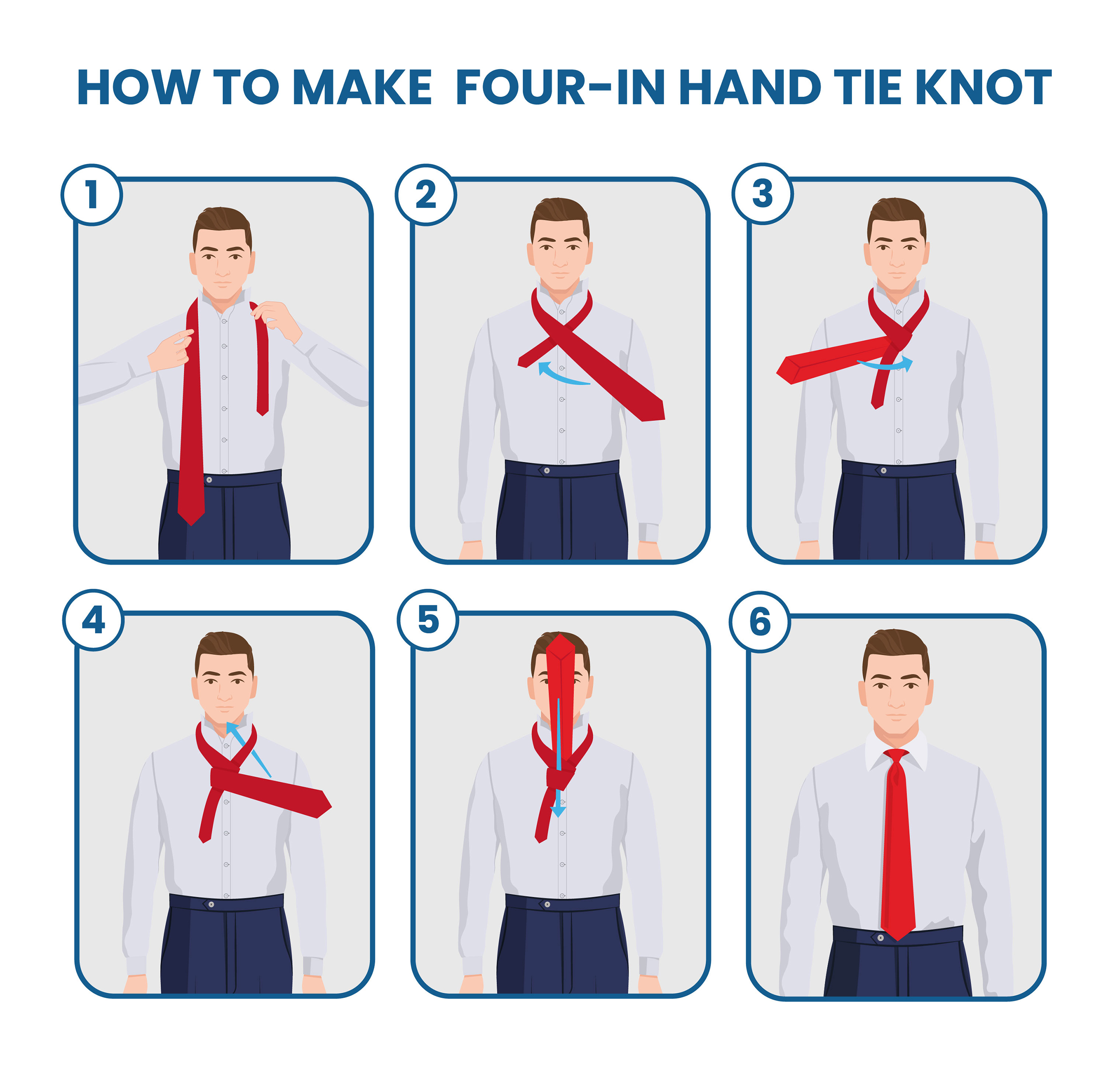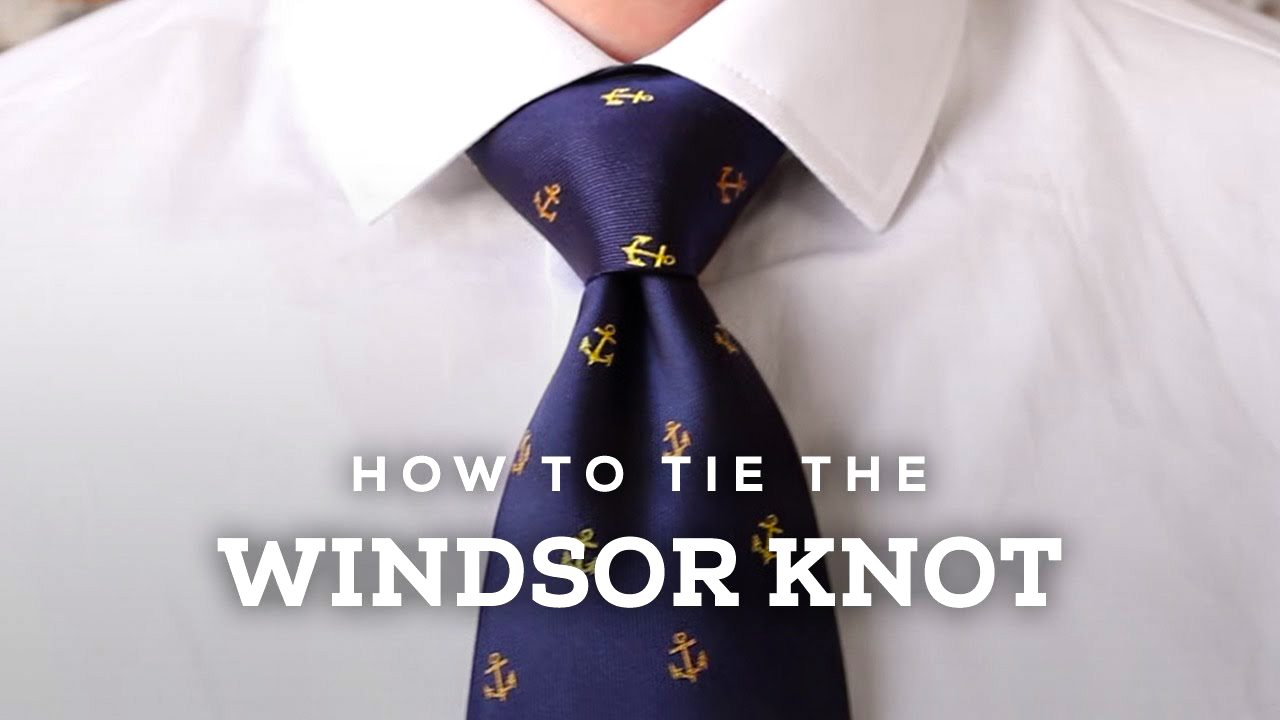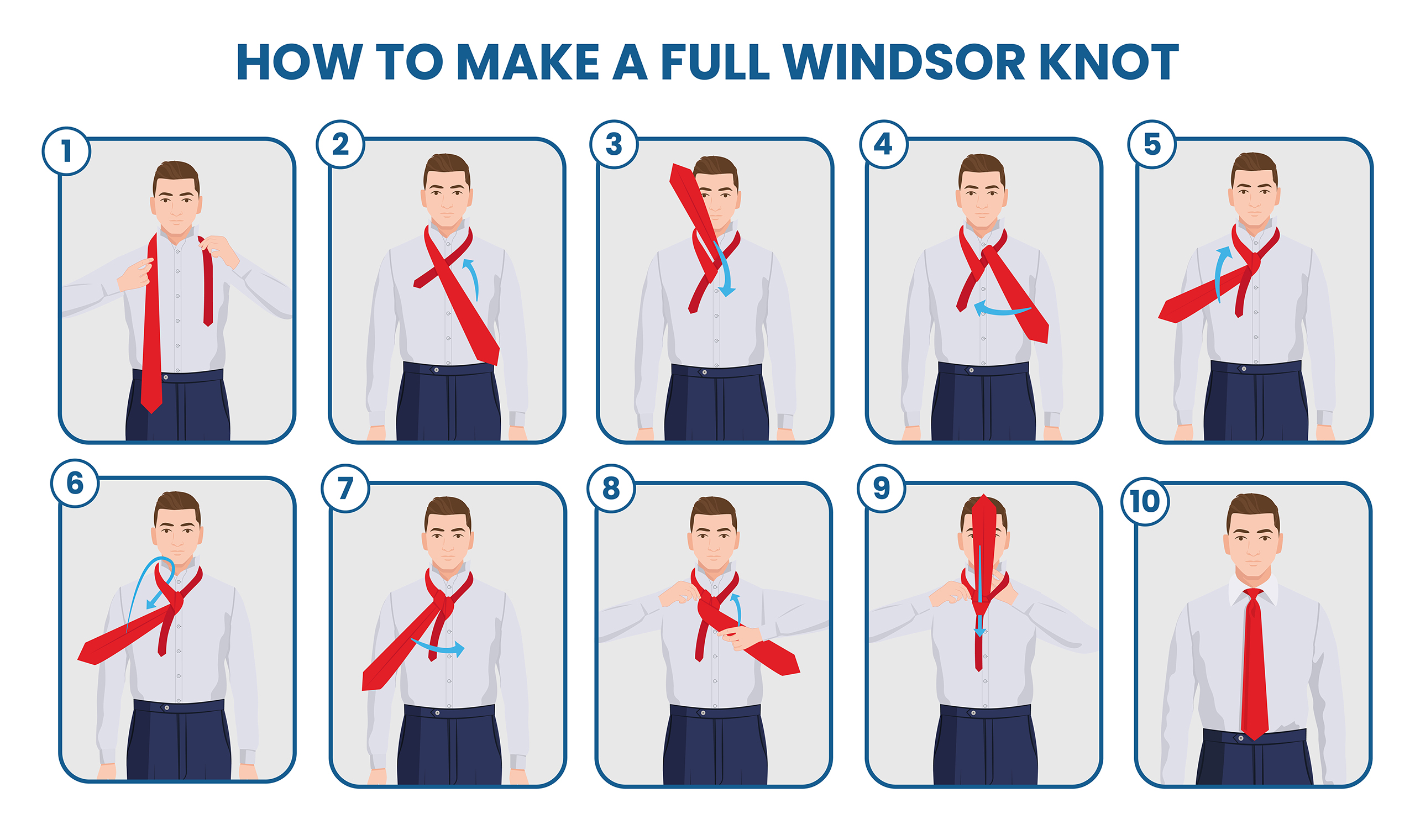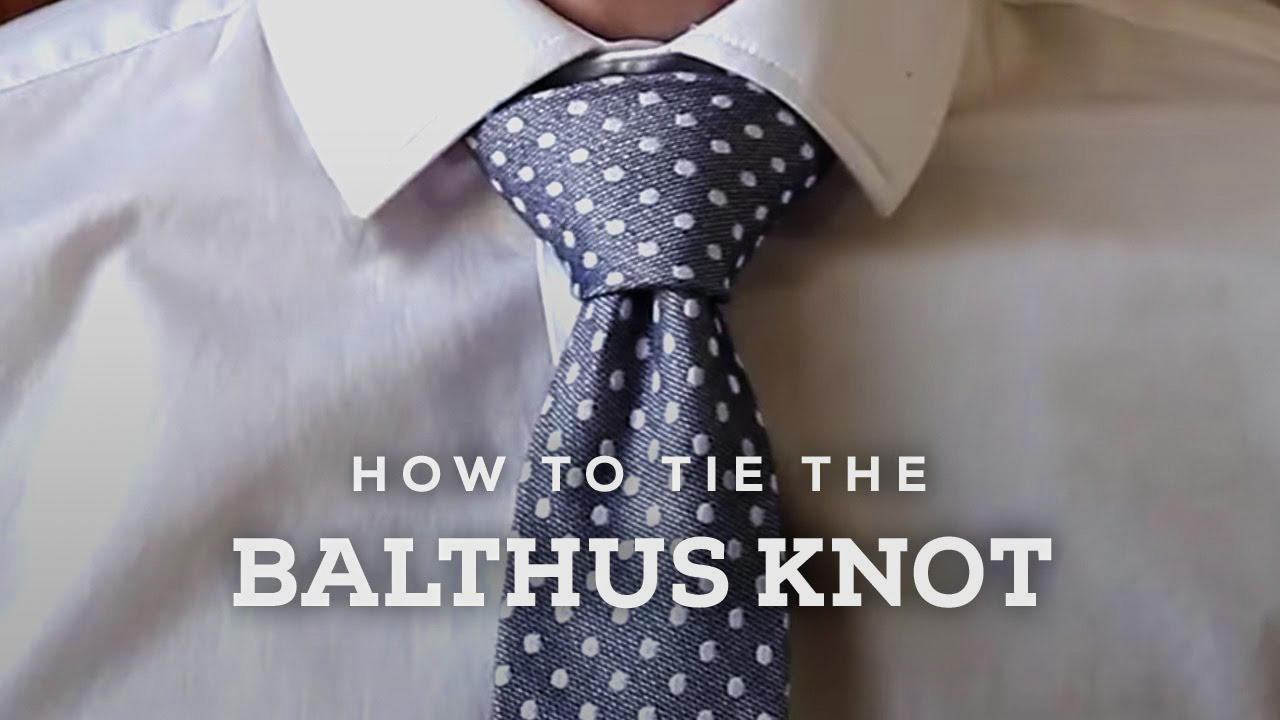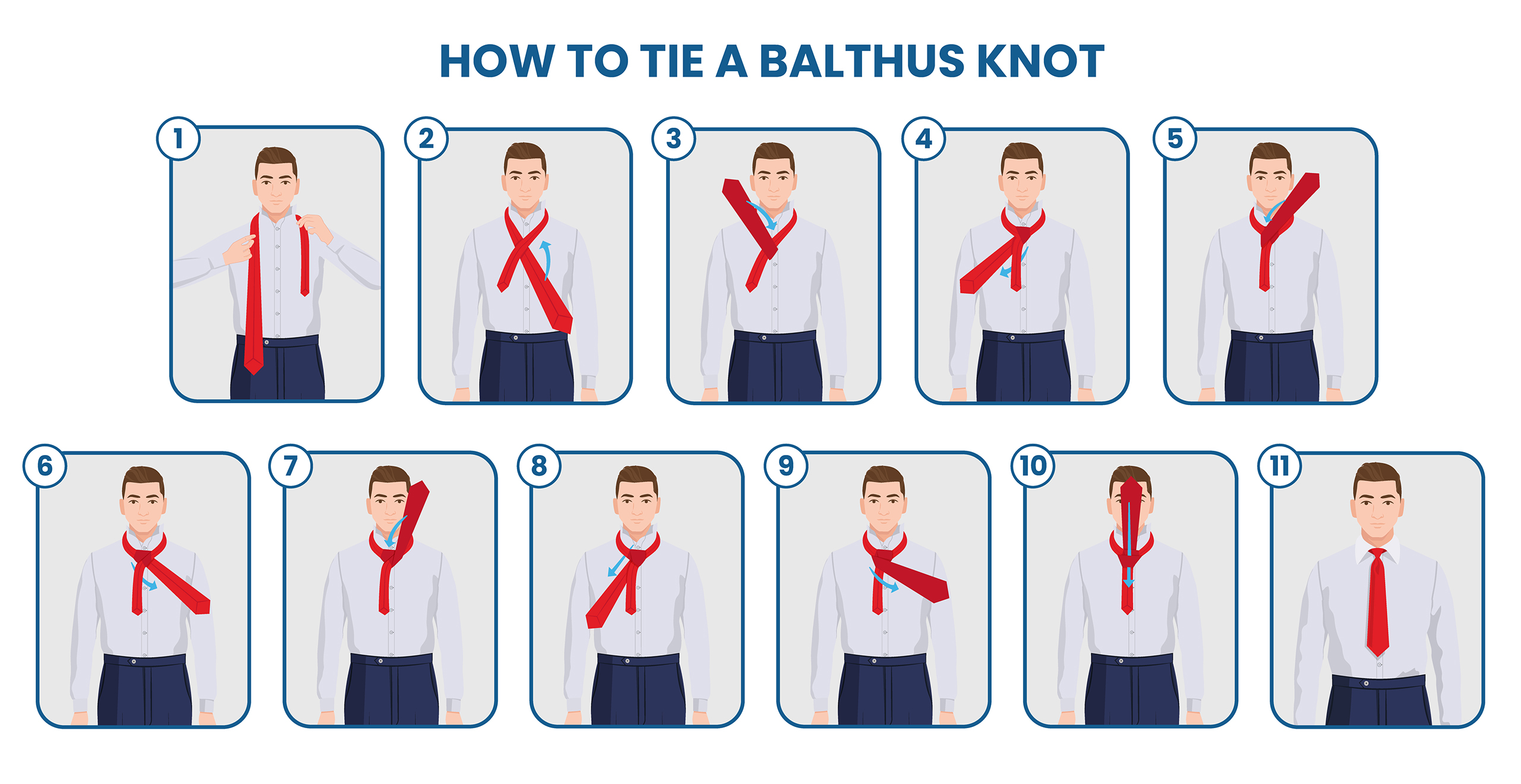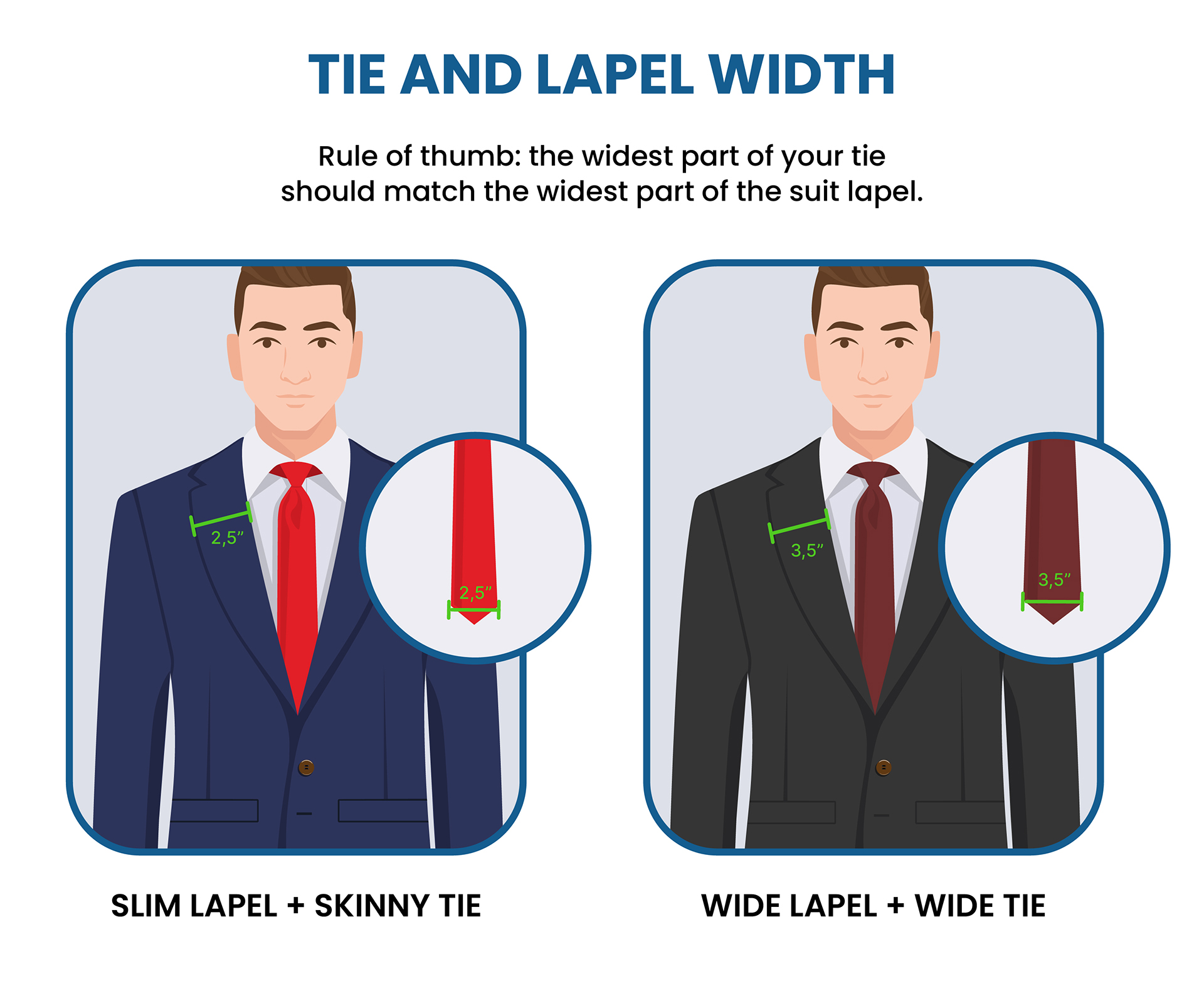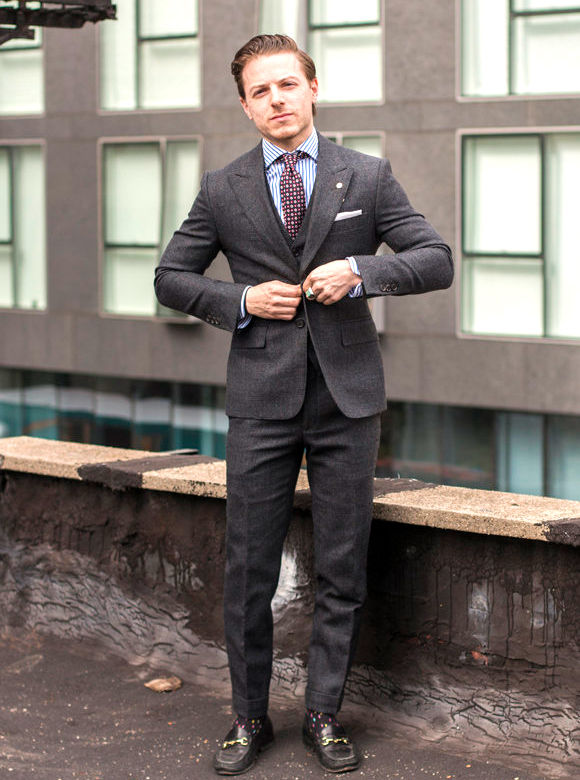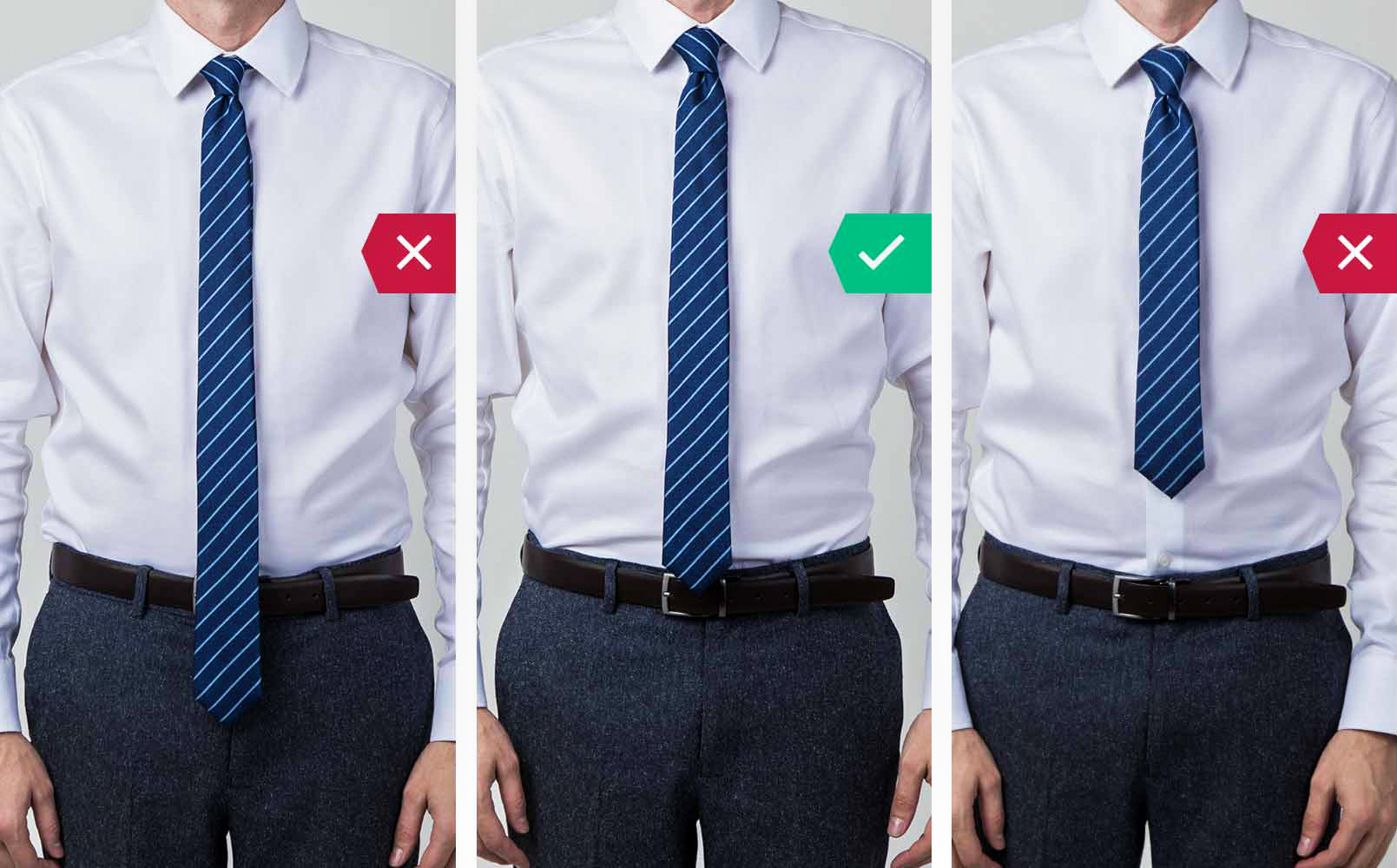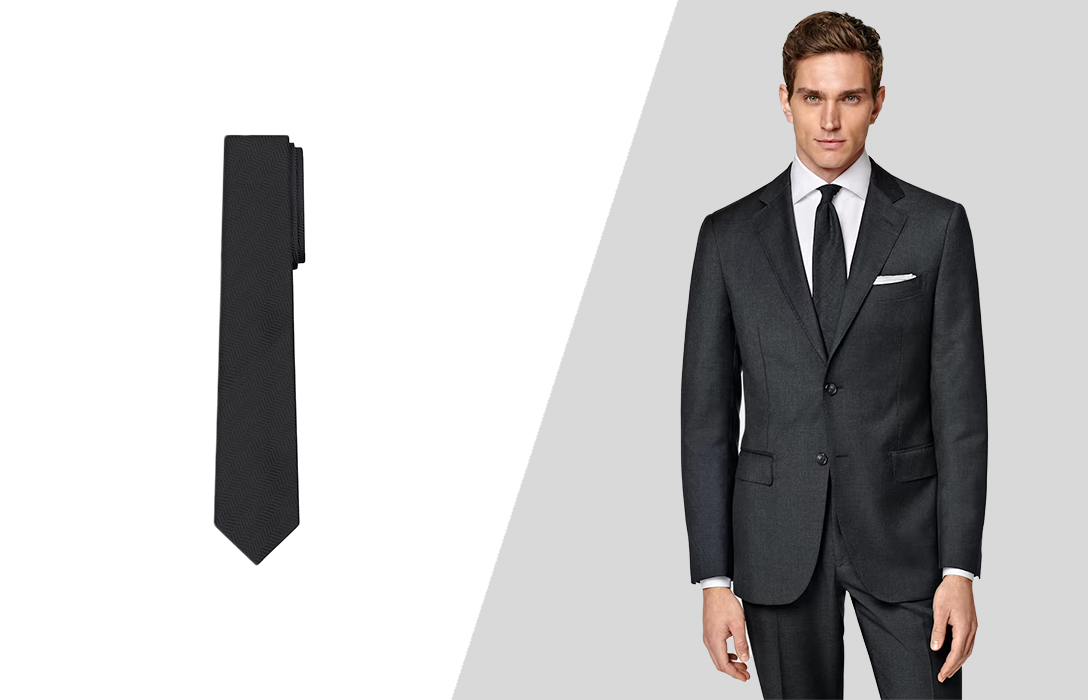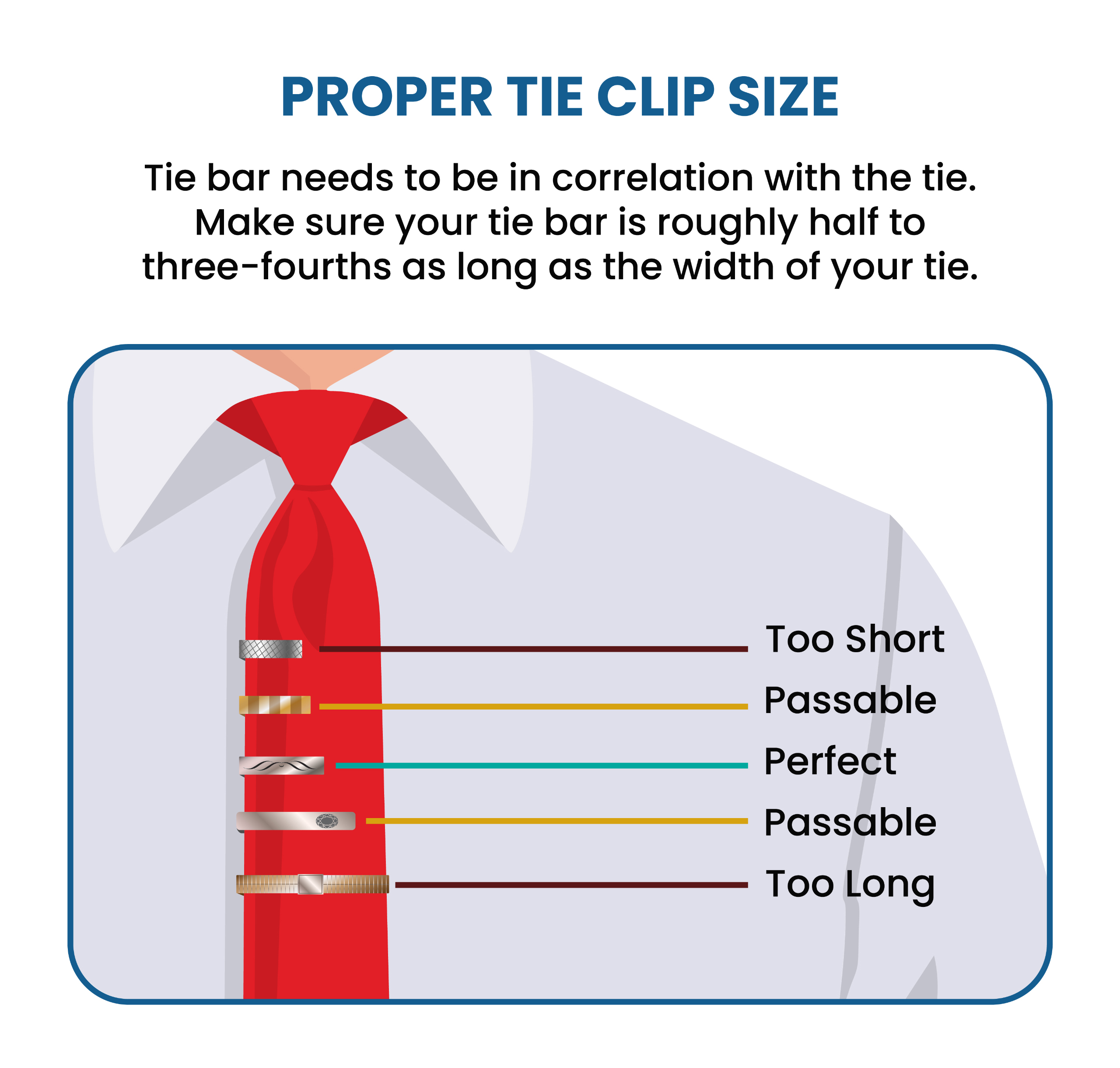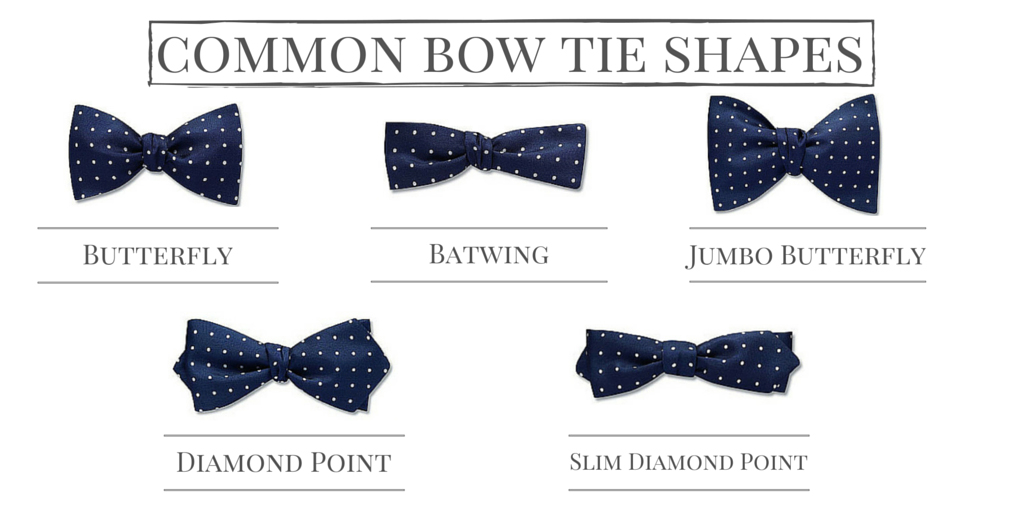Men’s ties are just a minor detail in the overall outfit!? Or so you might think…
Actually, nothing says more about the man than a well-chosen tie with a knot that’s entirely appropriate for the occasion.
The right tie can significantly affect how you look and feel. Sure, your shoes, belt, and other suit accessories will all contribute to your overall appearance.
But, without a necktie, your suit is missing something that marks you as the debonair gentleman you are or always wanted to be.
This in-depth men’s ties guide will answer these questions and a lot more. It will help you feel better informed and more confident when you buy and wear a tie.
We’ll start with the basics and explore a topic that has baffled many young men since neckties first arrived on the scene. Which is the best knot, and how do you tie a tie, anyway?
How to Tie a Tie
There are plenty of ways to tie a tie (necktie), but we will consider the most used and popular knots:
The Simple Knot
This easy-to-tie knot is also known as the Oriental knot. It’s not that common in the West but is considered trendy in countries like China.
The Oriental method uses the least number of steps, and it’s ideal for a skinny tie as it keeps the knot small. It’s also advantageous for taller men who need length to balance their looks.
- Begin with the tie’s wide end on your right-hand side and the narrow end on your left.
- Position the tip of the small end just above your belly button.
- Wind the broader portion under the narrow end towards the left, then back across towards the right.
- Take the wide tip up towards the neck, then back down through the loop just formed at the front.
- Tighten the knot by pulling downwards on the wider end, simultaneously sliding the knot upwards. That’s it; you’re good to go!
The disadvantages of this knot are that it can be difficult to untie and that the result is asymmetrical. It makes the knot lean over to one side.
That said, if you’re into time-saving minimalism or wearing a skinny tie, this is the knot for you!
The Four-in-Hand Knot
This is a true classic. Named after a famous Gentleman’s Club in London, it is sometimes referred to as the schoolboy knot.
It’s probably the most popular knot in the West for many good reasons. Simple to tie, versatile to wear, only slightly asymmetrical, and best of all, it’s self-releasing.
The Four-in-Hand is your go-to, everyday knot, whether you’re a schoolboy or a busy company exec. Here’s how to do it:
- Place around the neck and cross the wide part over the front of the narrow portion of the tie.
- Wrap behind the narrow part and bring forward on the opposite side to cross horizontally at the front.
- Fold beneath the narrow part a second time, then pull up over the knot from behind.
- Tuck the wide tip down behind the horizontal pass and pull to tighten the knot.
- Slide the knot up towards the neck until it fits snugly but comfortably. Looking good!
The Full Windsor Knot
This classic knot is named after the Duke of Windsor.
Funnily enough, the Grand Duke never actually wore this knot. Instead, he preferred the Four-in-Hand with very wide neckties.
Despite this fact, society loved the look, and soon men from all classes emulated his style. Using regular width ties, they eventually came up with what we today call the Full Windsor.
It creates a neat, symmetrical, triangular knot that works particularly well with spread-collared shirts. The famous Half Windsor is the less formal version of this now timeless classic.
It’s fair to say that the Full Windsor belongs to one of the more advanced knots. But never fear; with a little practice, you, too, can look like royalty:
- Place around the neck and cross the wide end over the front of the narrower part.
- Push the wide end behind the narrow part and push it up and through the loop.
- Wrap the wide end behind the knot.
- From the front, pull the wide end back and down over the top of the knot.
- Again, wrap around the knot.
- From behind, bring the wide end up over the top of the knot.
- Then, push the tip down inside the loop.
- Smooth out any wrinkles and pull snug around the neck.
If it doesn’t look right, undo it and start again by adjusting the length of the wide or narrow parts. And remember, a perfect Windsor knot can only be created with practice!
The Balthus Knot
If you want your tie to make a statement rather than just blend in, this one’s for you. The Balthus is arty, big, and takes a degree of confidence to wear.
First worn back in the 1930s by the Polish-French artist Balthasar Klossowski, it caused quite a stir. The reason for its size is that the wide end is wrapped many times around the narrow end.
As a result, the tie ends up being very short. Wear it if you dare, and you’ll most definitely get noticed:
- With the broad end on the right, place it around the neck with the back of the tie facing forward.
- To your left, push the wide end underneath the narrow end.
- Pull up the middle towards the loop.
- Push through the loop and back down to the right.
- Again, pull the wide tip back up to the center and towards the loop.
- Push down through the loop, this time to the left.
- Pull back up toward the center of the loop.
- Slip the wide tip into the loop and pull down to the right side again.
- Fold it to the left across the front of the narrow part.
- Pull back up inside the loop.
- Pass it back down inside the loop that appears at the front.
- Pull down to tighten and slide up to fit snug around the neck. Tying a Bathus knot is no mean feat, so well done if you got it right the first time!
Tie Fabrics
Tie fabrics are essential when matching your tie with a suit.
Silk
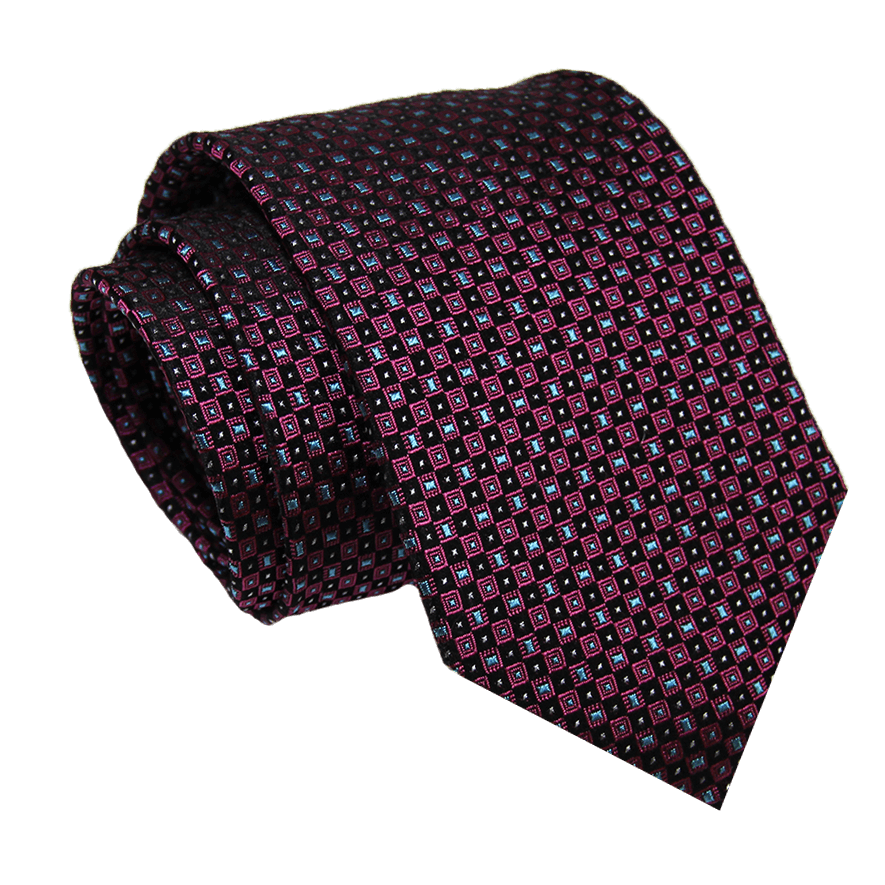
But you must choose the color and pattern you wear carefully if you want the best results.
It takes around 150 silkworms to produce enough raw material to make just one tie, which is why silk ties are expensive and problematic for proponents of animal rights.
Cashmere
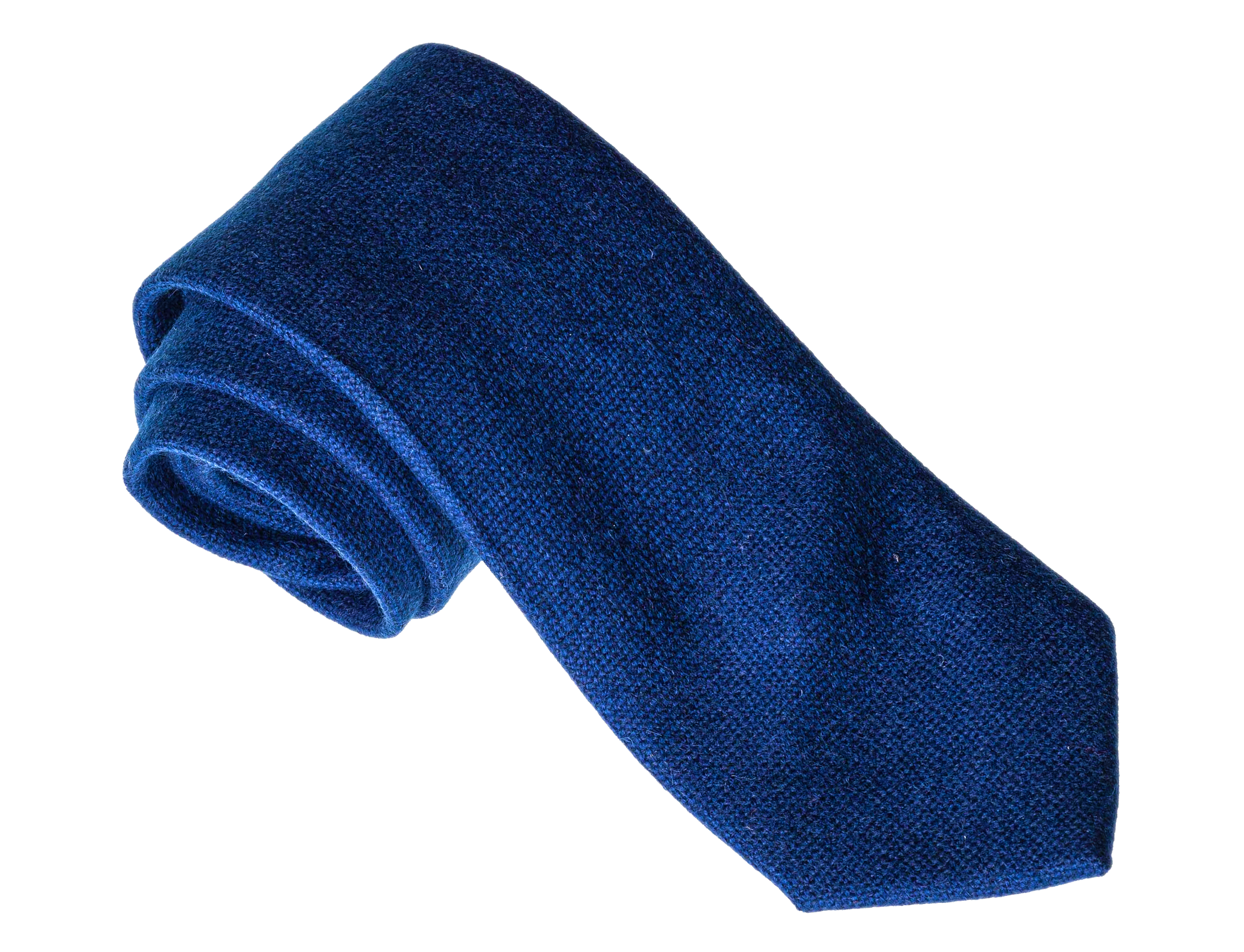
It’s best worn in winter and provides a truly luxurious finish to your cold-weather outfits.
Cotton
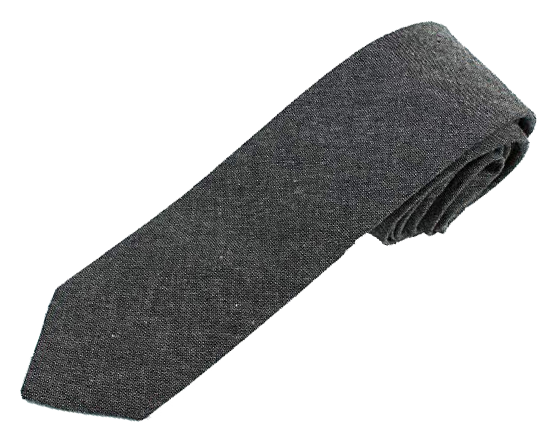
Linen
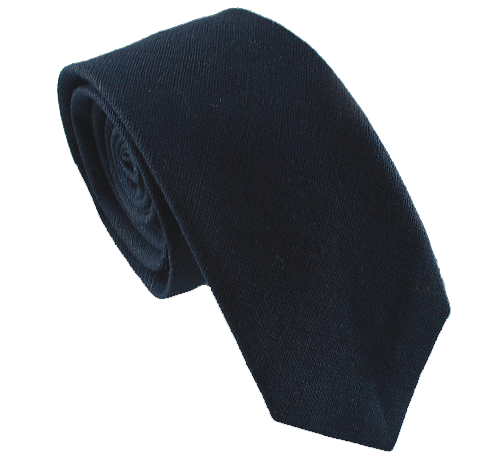
Wool
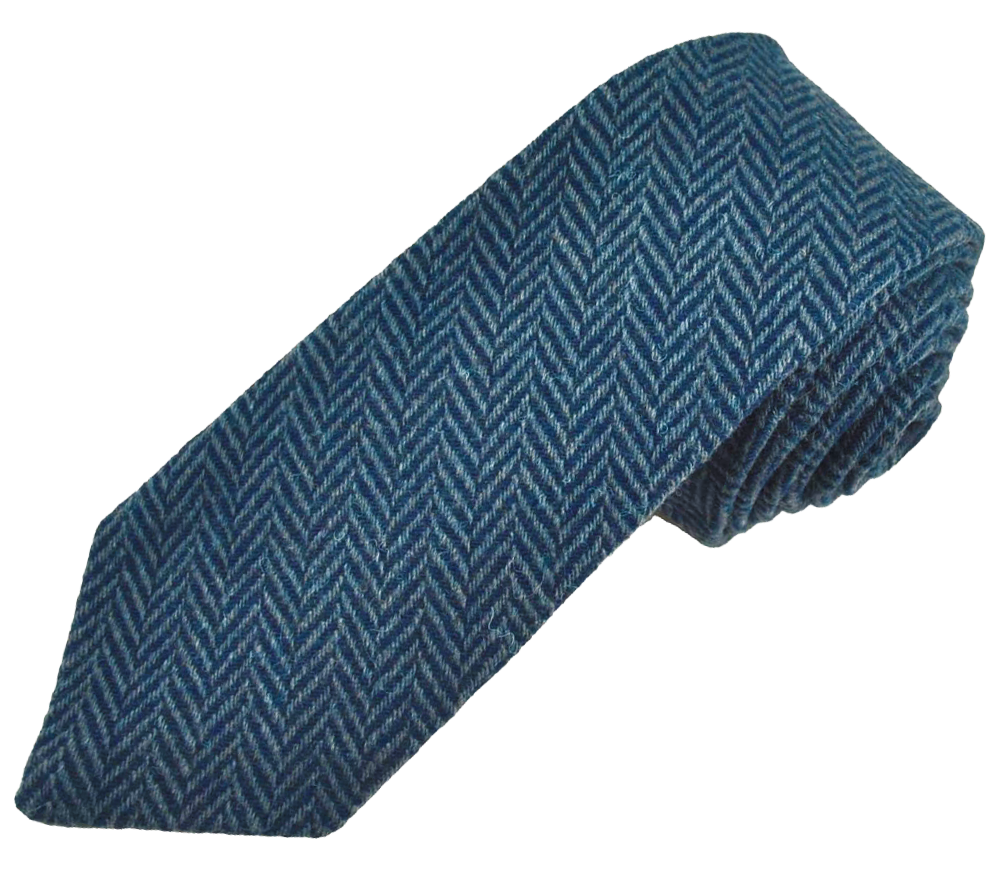
Woolen ties can be a little bulky, so get one that is unlined to reduce the knot’s volume.
Avoid wearing heavy suits. Worn as an accessory with a cotton suit, a wool tie will help balance your overall look.
Knits
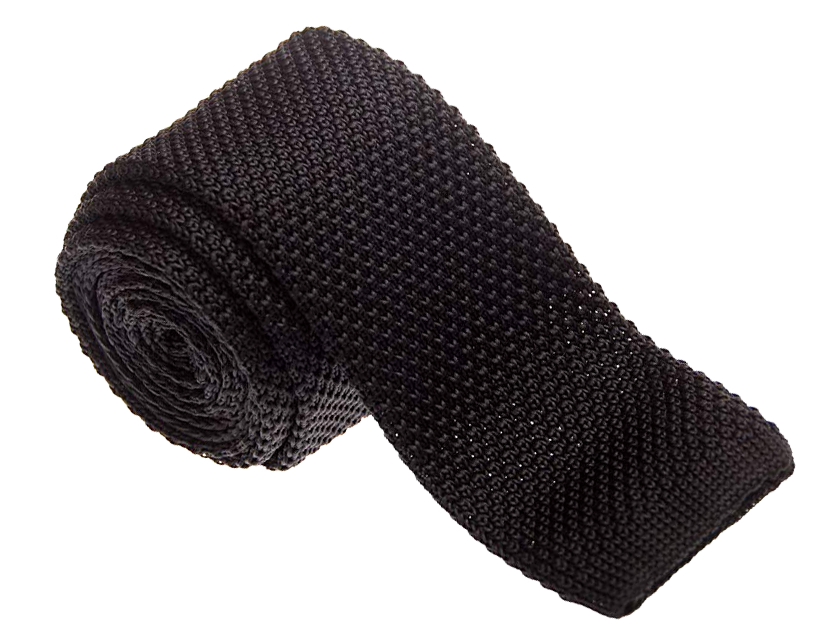
Knit men’s ties are more casual and relaxed and should not be worn on formal occasions. They can work well with a business suit, but you might want to wear a silk knit tie instead. Knit ties don’t crease like other men’s ties, so they are ideal if you’re traveling.
Synthetics
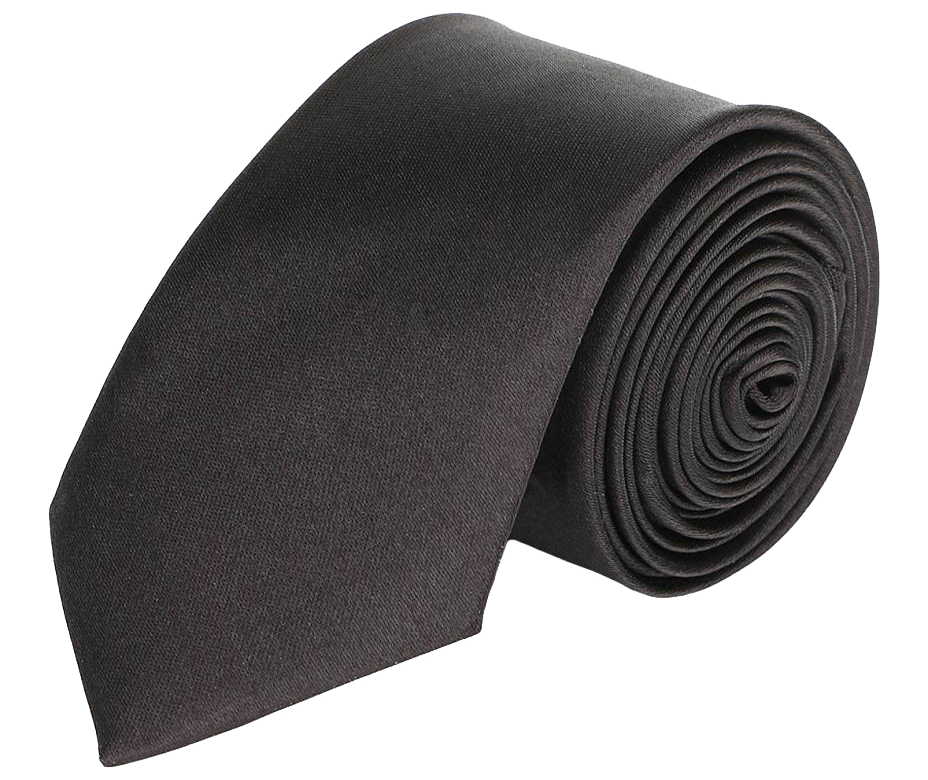
Synthetic ties are cheap and vegan-friendly, come in a wide color range, and are crease-resistant. Polyester ties are generally the most affordable, but they can look cheap, too. I’d recommend microfiber instead. It’s almost indistinguishable from silk and half the price.
Tie Patterns
I will try and sort all different tie styles and patterns by usefulness, which is not necessarily accountable. The point is that every type of necktie has its part to play on the stage.
Solid Ties
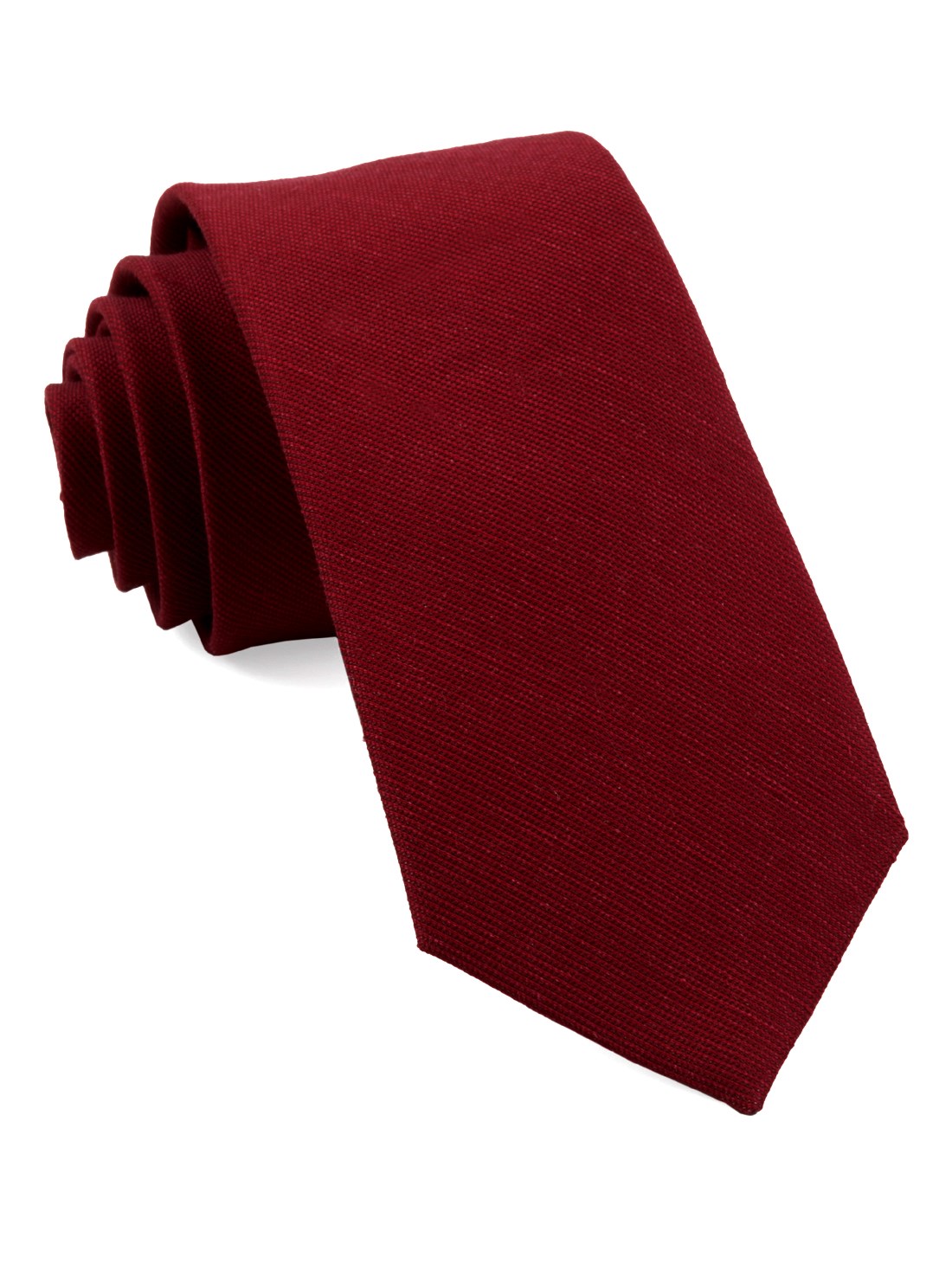
Think twice before purchasing a solid black tie. I mean, is it really necessary? Also, combining a black tie with a white shirt is too much déjà vu and will not stand you from the crowd.
Macclesfield Ties
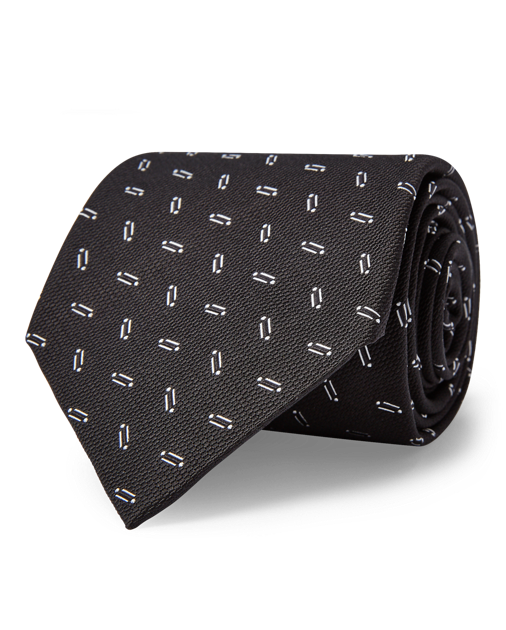
In fact, the Macclesfield used to be called the “wedding tie” because of the silver sheen that enhances their grey or white color. They are inherently formal and work well with morning dress.
Foulard Ties
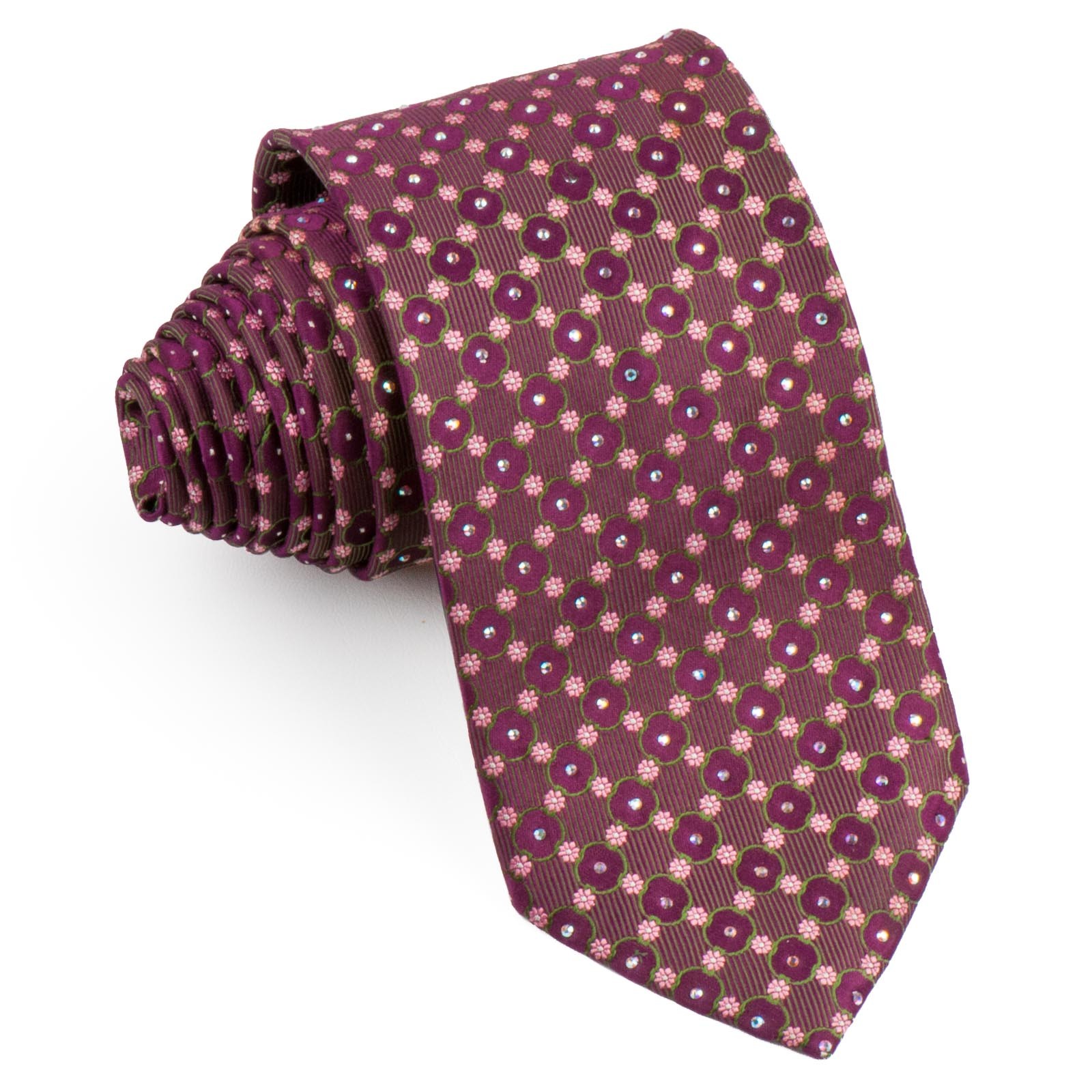
Patterns can be any geometric objects, carefully designed shapes, or even flowers. Let this not intimidate you, for they can look stylish and formal at the same time.
Club Ties
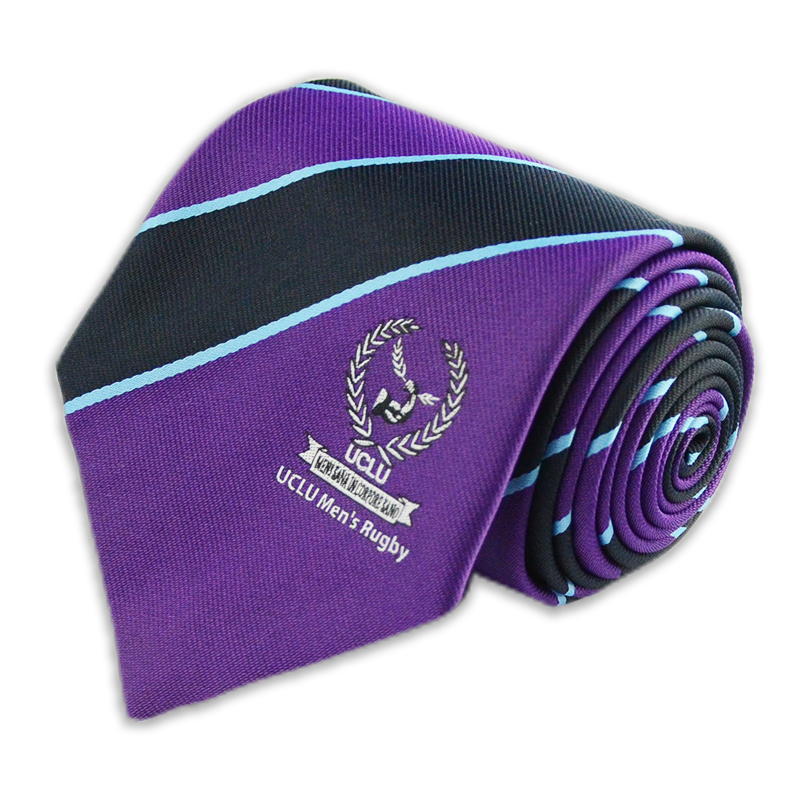
Therefore the name “club ties”. The club’s insight defined the color, and it was obligatory to enter the club’s facilities.
Striped Ties
Stripped ties are best suited for formal occasions, business meetings, or any work events. There are three main subcategories of striped ties:
British Striped Ties
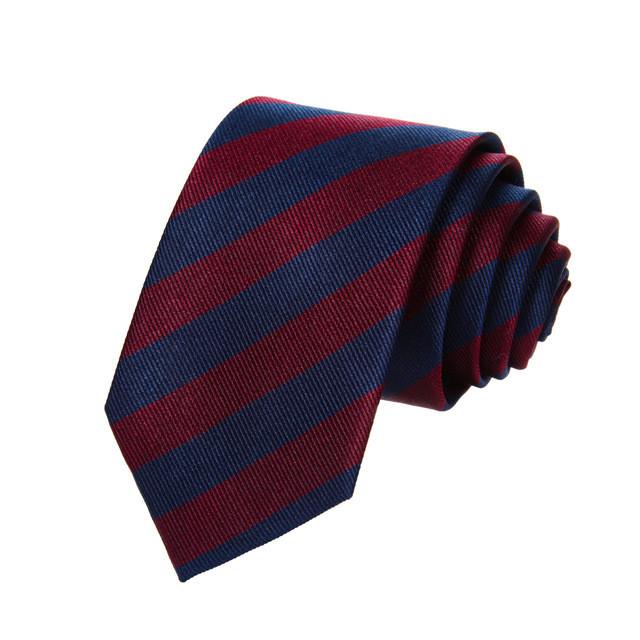
American Striped Ties
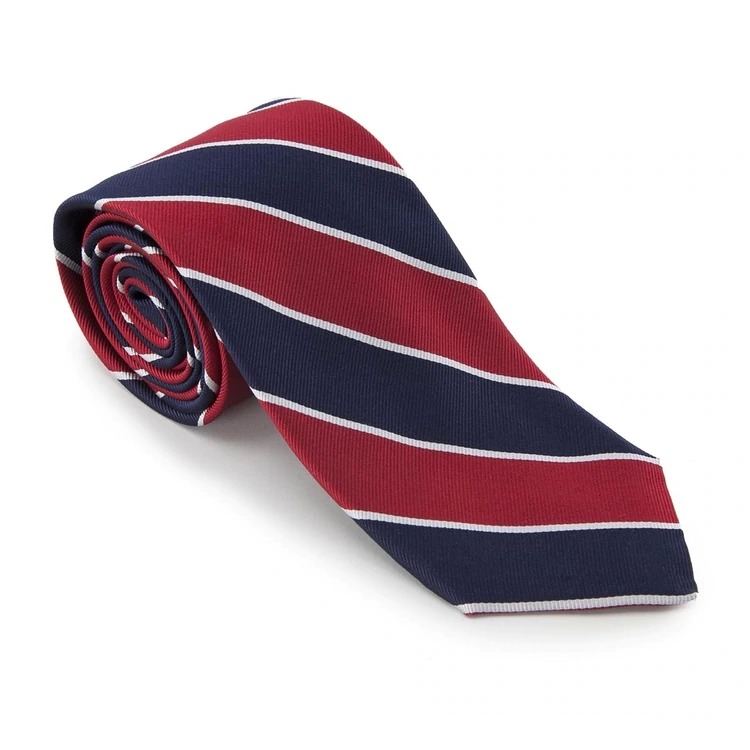
Repp Striped Ties
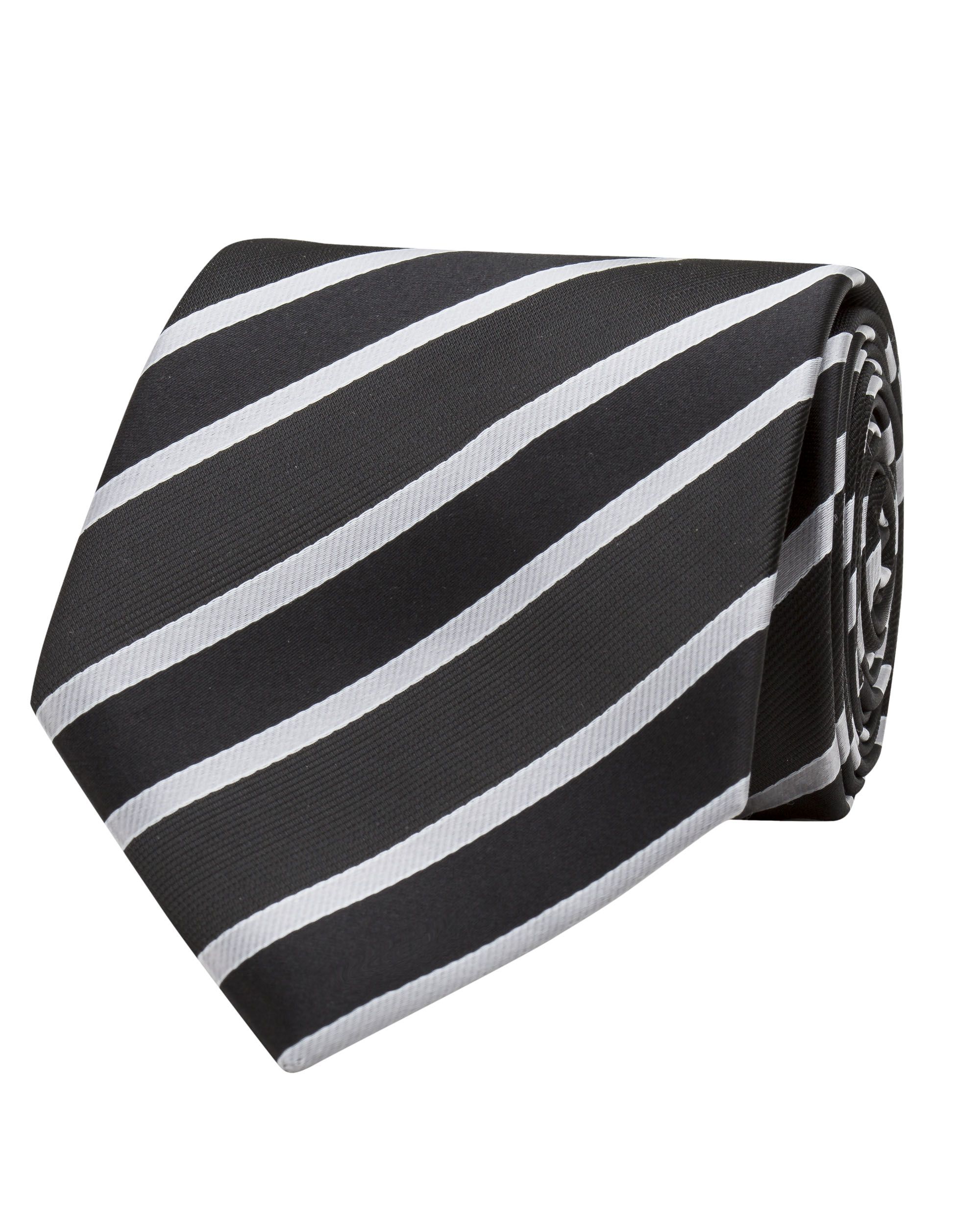
Dotted Ties
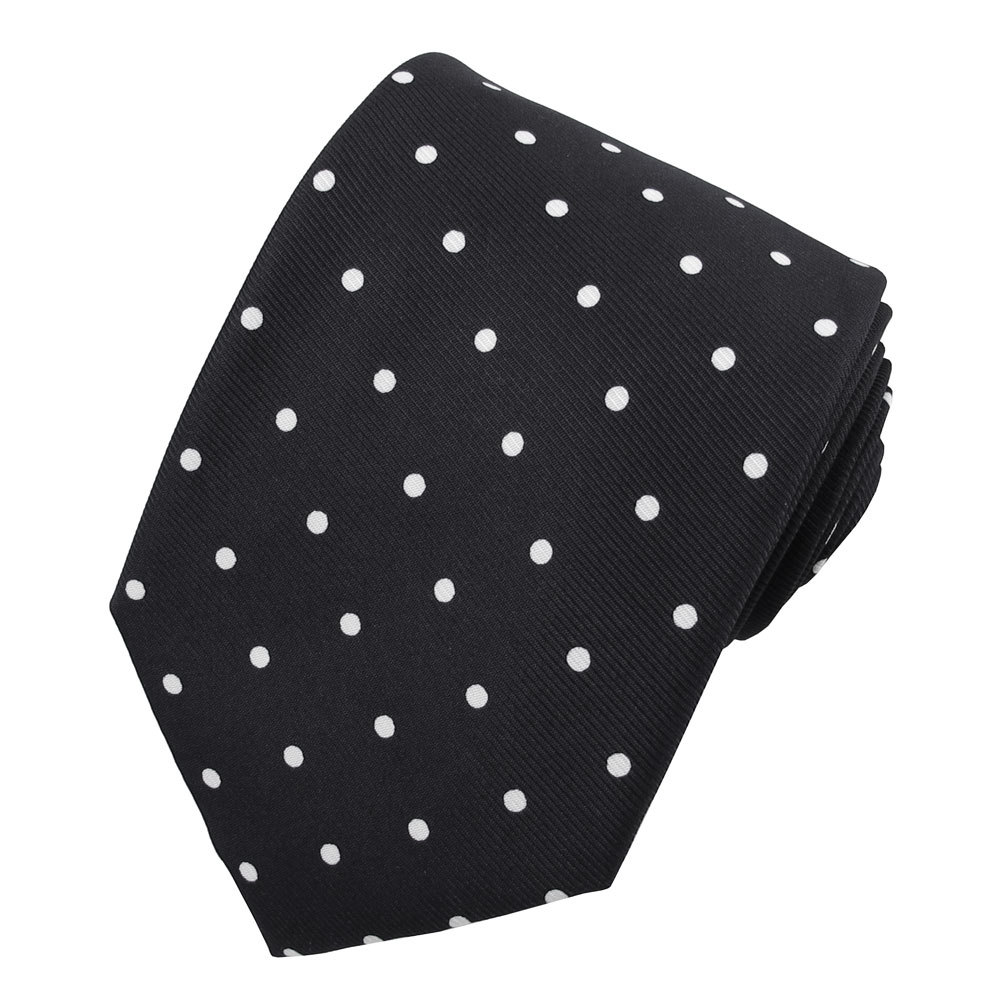
Dotted ties can be a perfect choice for more occasional meetings. Try to pair them with a nice solid shirt and suit. Avoid using them too much, though. Having one dotted tie for your wardrobe can be enough.
Plaid Ties
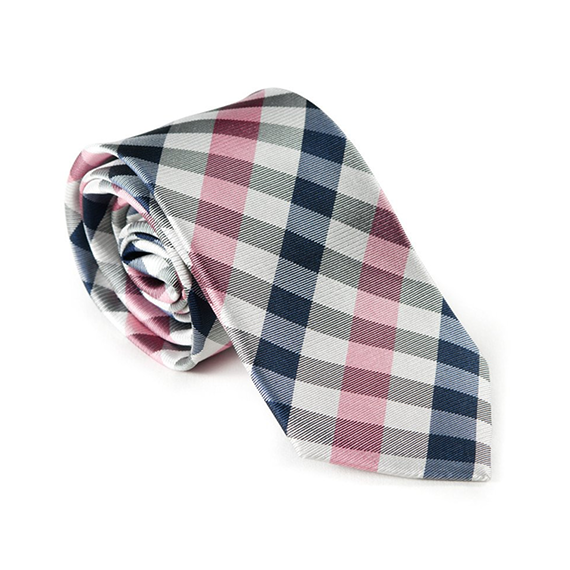
These types of men’s ties are more suited for casual events. They pair nicely with striped suits or shirts. Avoid too many colors in them, and you are good.
Paisley Ties
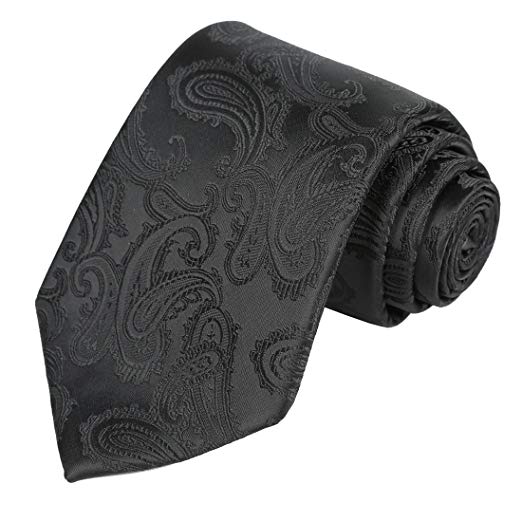
Ties & Accessories
You’ve spent time getting your suit pants and jacket to fit perfectly. You’ve even fitted your dress shirt correctly. So it makes sense to give some thought to the fit of your tie too.
A lot of men can get confused when it comes to choosing a tie.
Which patterns look best? Which tie colors do best with which shirts? How do you know if the tie you’re buying is good quality or not?
Choosing the correct width and length for your body size and shape can also be an issue. And that’s all before you start thinking about the knot.
Tie Proportions
Although tie width varies with fashion trends and personal preferences, there are a few guidelines that every man should follow. The size of your tie, for example.
As a rule of thumb, your tie’s widest part should match the widest part of the suit lapel. Also, it should match the width of the shirt’s collar.
Ties for Short Men
The size of your tie matters, just as the size of your suit. The aim of any fashion item for shorter men is to draw the eye vertically rather than horizontally. Proportion is all-important here.
Shorter gents should avoid oversized, wide ties in large, bold patterns. Instead, skinnier ties in colors that are not too flashy or overpowering are best.
How to Fit a Tie
When it comes to length, many men wear ties way too short. So unless you’re making a statement, your tie tip should just touch the center of your waistband.
You will need to adjust the type of knot, and always ensure you buy the correct tie length for your height.
The back blade length should match the front before you make the knot. If it doesn’t, you need to purchase longer ties.
Simply stated: the widest part of your lapel and your tie’s broadest part should be the same. The result should touch your waistband.
Men’s Ties Color Combinations
There are a few standard color combinations that every man should know. For example, a dark grey suit is a classic that pairs well with a black tie for those formal occasions.
Just be sure to wear a light shirt underneath. Pale blue or white are always on-trend. Red ties in various shades also look great with grey suits, especially with a white dress shirt underneath.
Navy is another color suit that every man should own. This color will take you from the office to a wedding. It’s elegant and entirely classic, so pick similarly dapper ties.
Navy can be worn with several colors of men’s ties – from dark brown all the way through to bright pink.
As with any clothing item, give them a miss if certain color combinations make you uncomfortable or unsure.
Tie Clips
Tie clips are great for accessorizing formal suits. They usually come in the form of a small metal bar and are both decorative and practical. They hold your tie in place by fixing it to the shirt placket.
Again, the devil is in the detail, and if you wear a tie clip, it’s crucial to get it right.
Attach the clip horizontally from left to right between the third and fourth buttons of your shirt. Remember, understatement is key, and your tie clip should have a simple, elegant design. Silver is a good color choice here.
For more casual outfits, you can look for other colors and designs that express your individuality. Short men should avoid flashy, obvious tie clips. These will visually cut the body in half rather than elongating it.
Bow Ties vs. Neckties
Bow ties are different and, if I may say, a special type of men’s ties. It’s tied around the shirt’s collar symmetrically.
There are three types of bow ties: pre-tied, clip-on, and self-tie bow ties. They come in several shapes: butterfly, batwing, big (jumbo) butterfly, diamond point, and slim diamond point.
Bow ties are subject to their own. They come with their own set of formal occasion rules that men must be aware of. But, apart from that, you can have a lot of fun with a bow tie.
To learn more about bow ties, I strongly recommend this guide.
Wrapping It Up
There can be no doubt about it. A tie adds the finishing touch to any man’s outfit and goes a long way toward ensuring they look their best. In fact, a tie can transmit confidence, competence, and authority.
Also, it can simply show that you know how to dress with style. Wearing the right tie says you are comfortable inside your skin and know you look great inside your suit.
But to wear a tie well, you should learn the art of wearing it correctly. You need to master the basic knots and understand proportions and color combinations.
Once you have done that, you can use the tie to express your personal style. A necktie can be worn as a flamboyant, bold statement or an understated, quiet class element and stylistic competence.
The choice is yours. By following our comprehensive guidelines, you can be sure that you’ll always be wearing the right tie the right way and at the right time.
Hi, I’m Alex, and I’ve studied and specialized in styling in Rome. Through my writing, I want to help men dress well and learn the purpose and significance of suits and other formal attire. My final goal is to make men more confident in their wardrobe choice and life in general.

